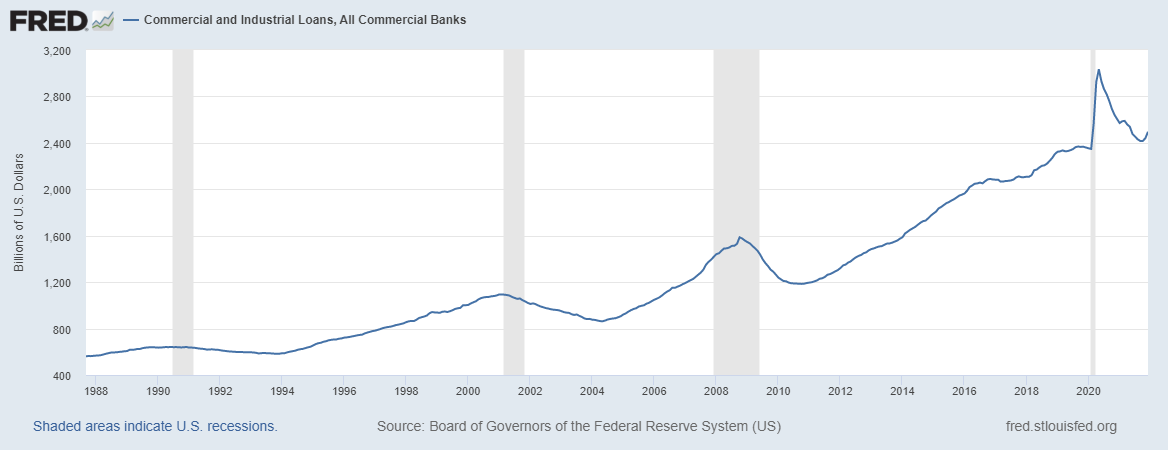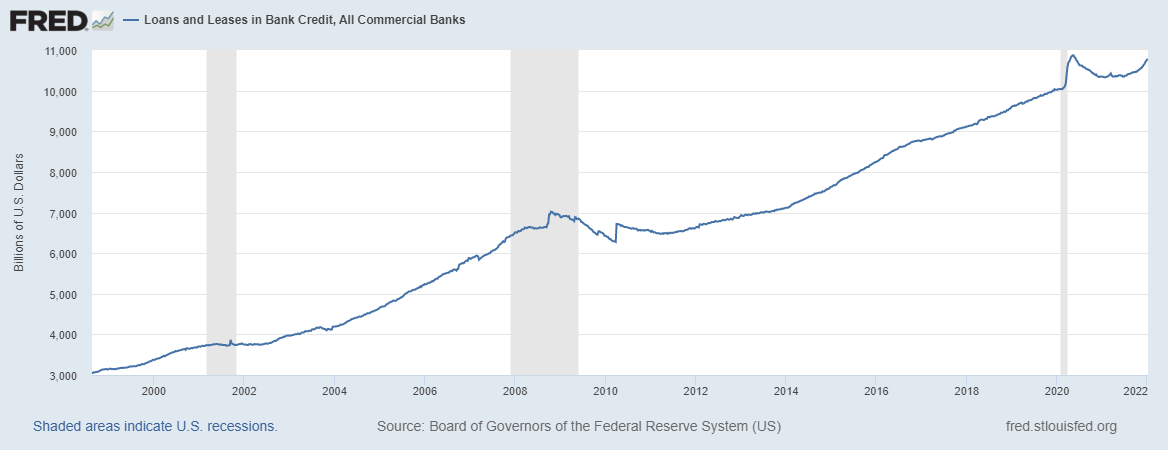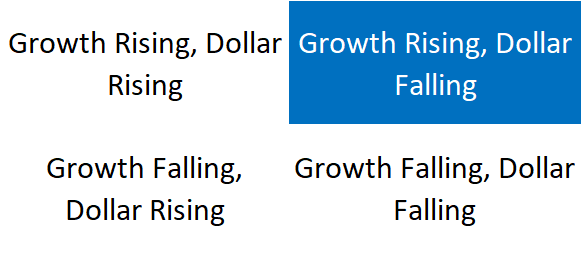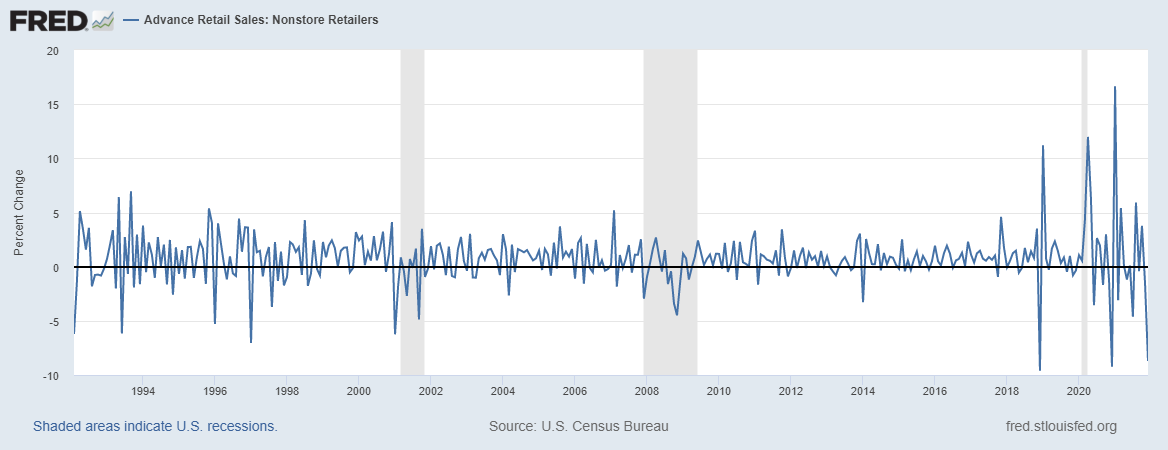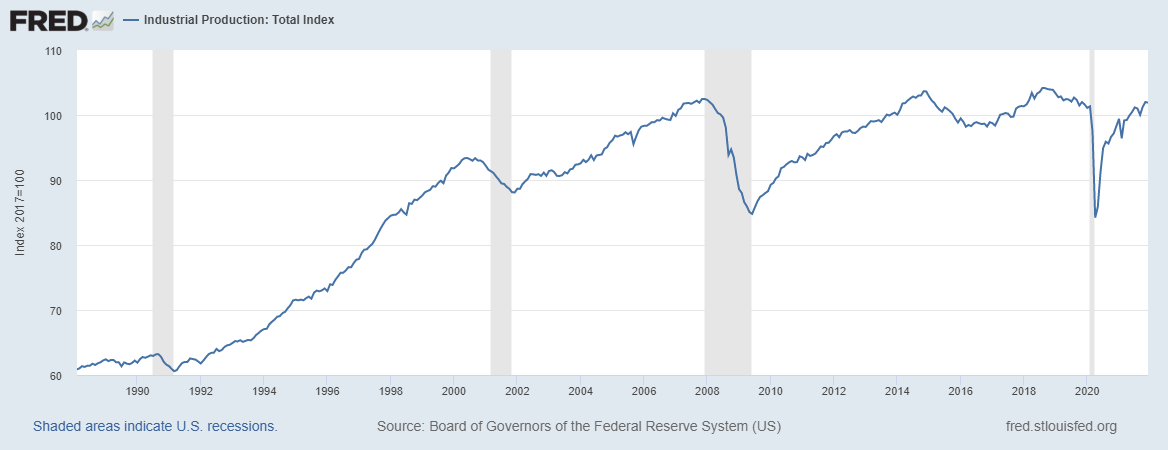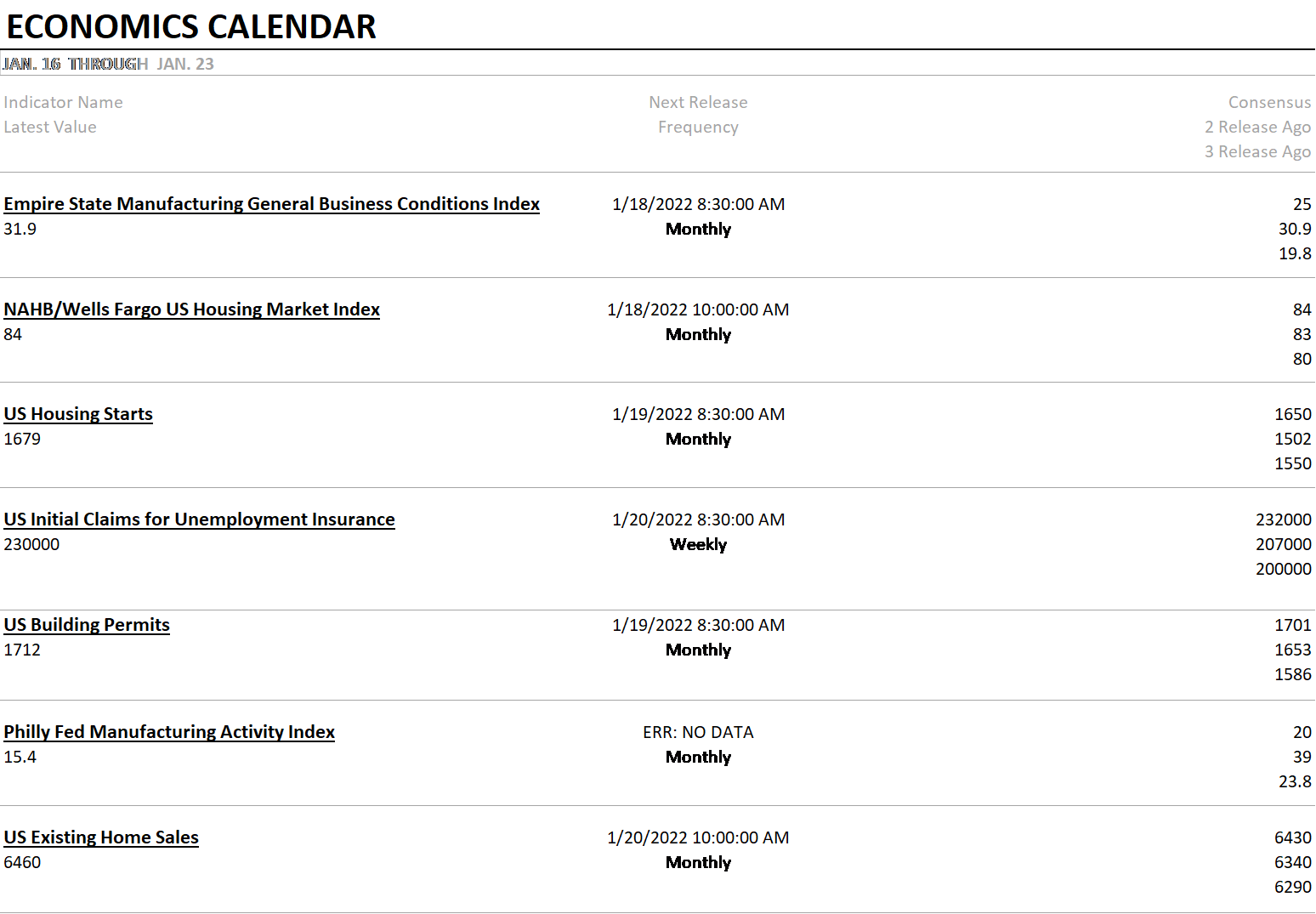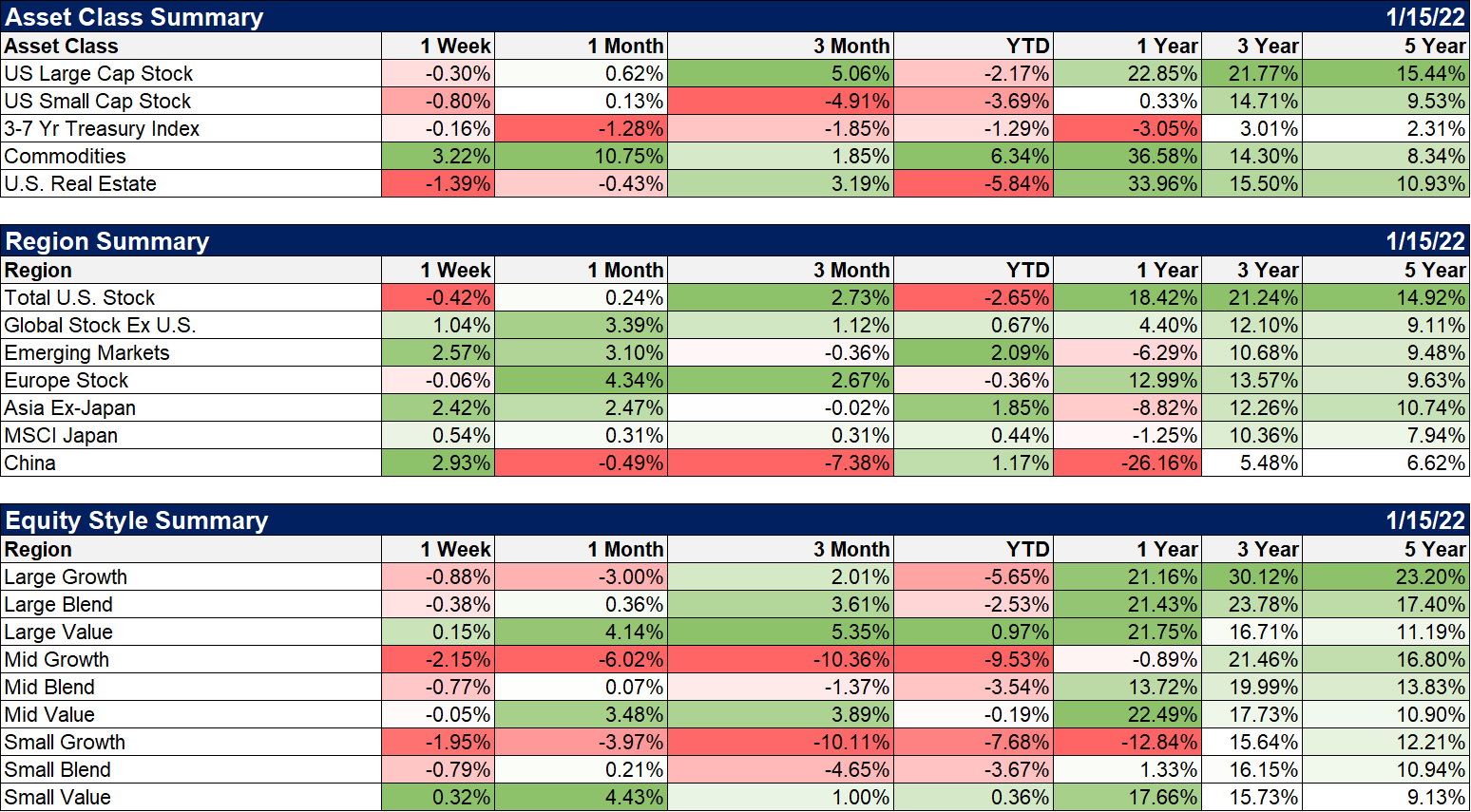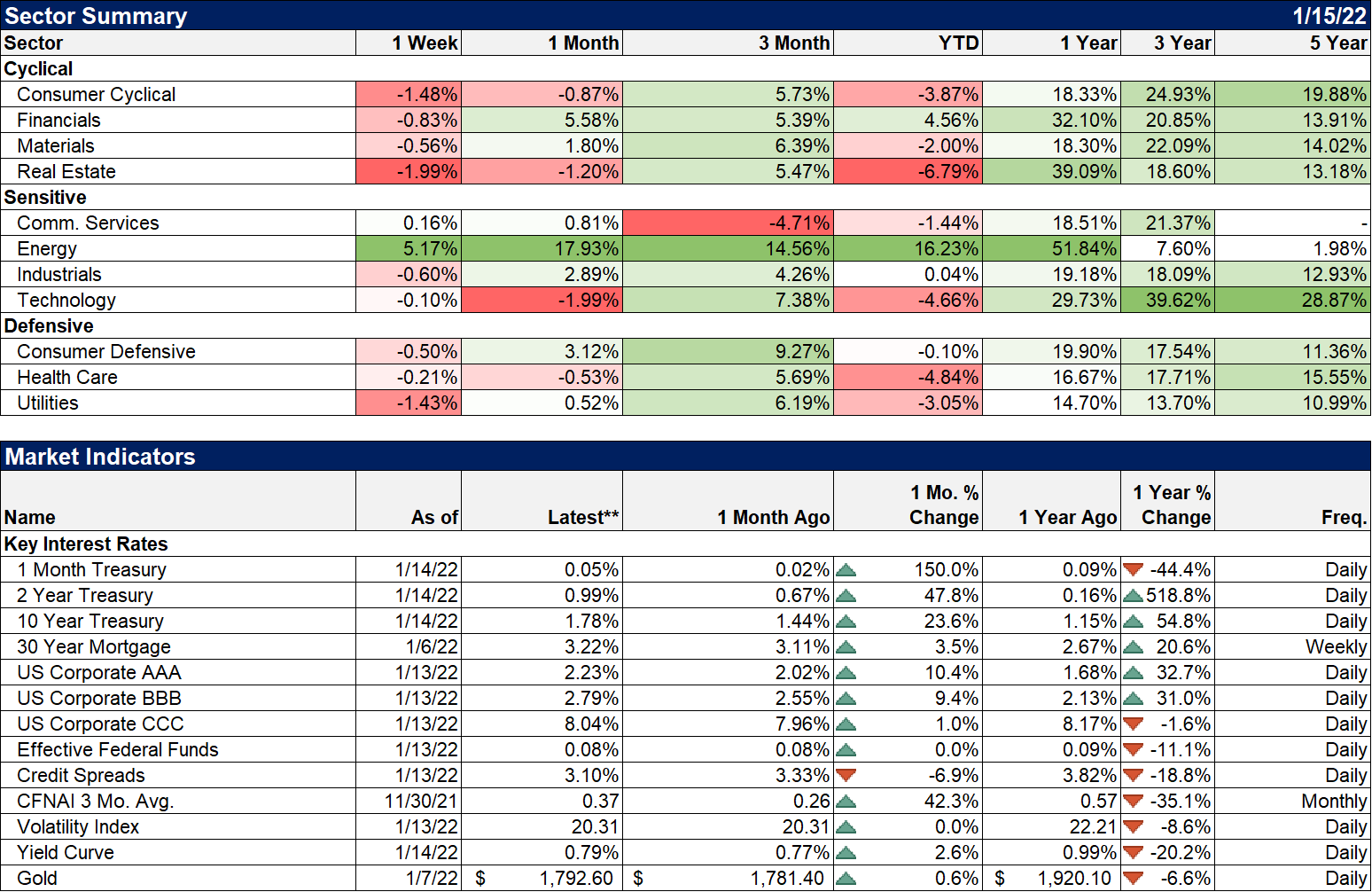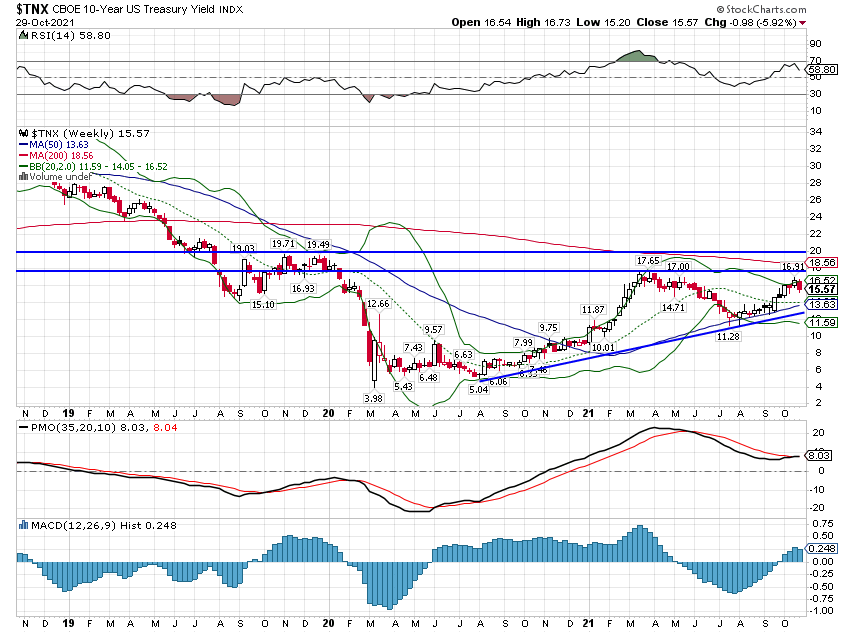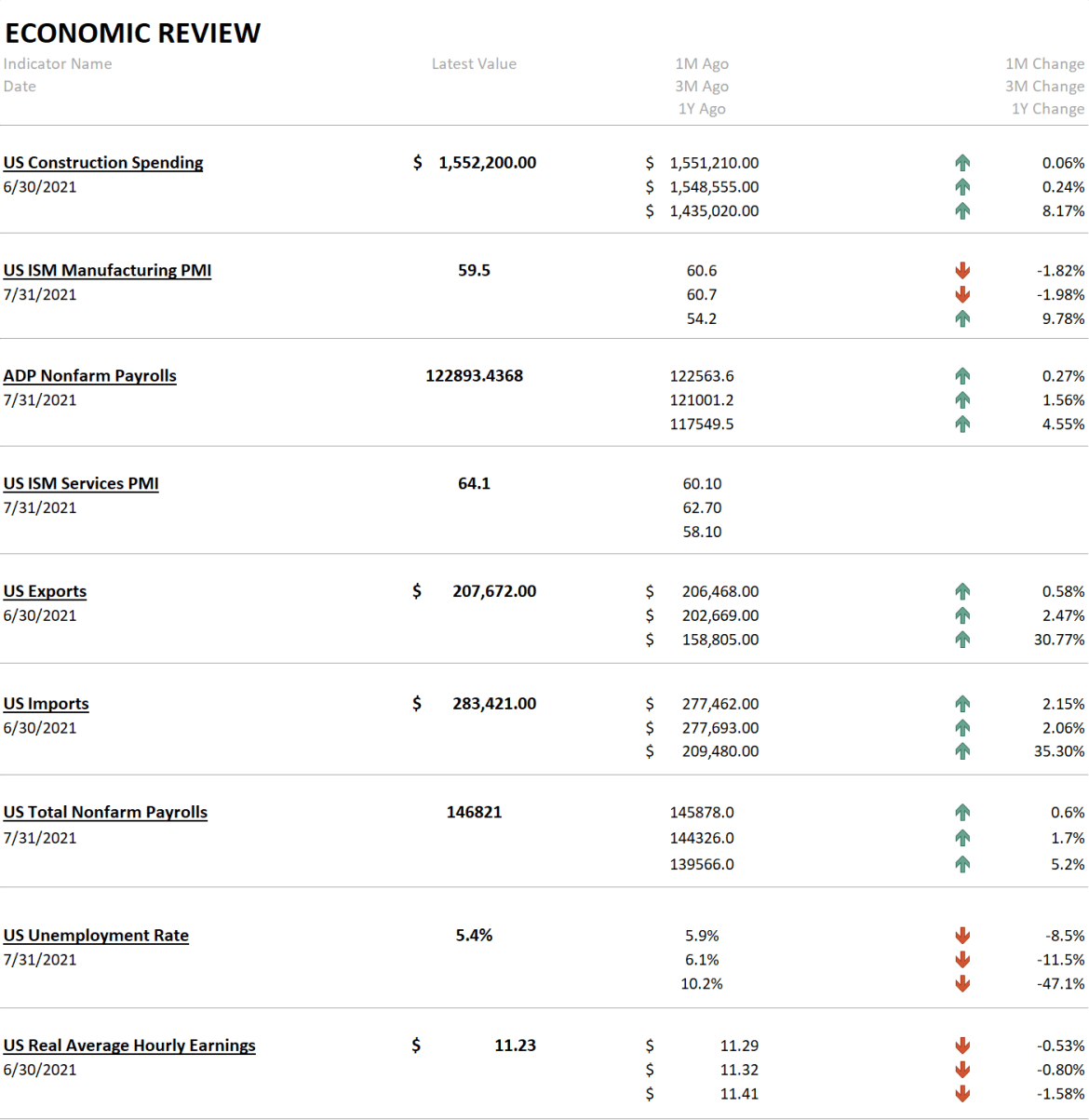What is the consensus about the economy today? Will 2022 growth be better or worse than 2021? Actually, that probably isn’t the right question because the economy slowed significantly in the second half of 2021. The real question is whether growth will improve from that reduced pace. The Atlanta Fed GDPNow tracker now has Q4 growth all the way down to 5% from the 6.8% rate expected just a week ago (a result of a less than expected retail sales report). That’s still a pretty good rate of growth if it holds up but my guess is that the final number will be somewhat less than that as the omicron wave took some juice out of the reacceleration from the end of Delta. I think a decent estimate of second half 2021 GDP growth would be 3.5 to 4%%. Interestingly, consensus
Topics:
Joseph Y. Calhoun considers the following as important: 5.) Alhambra Investments, Alhambra Research, bank lending, banks, bonds, China, Commercial and Industrial Loans, commodities, currencies, economic growth, economy, emerging markets, exports, Featured, inflation, Interest rates, Joe Biden, Markets, newsletter, Real estate, stocks, Taiwan, US dollar
This could be interesting, too:
Nachrichten Ticker - www.finanzen.ch writes Die Performance der Kryptowährungen in KW 9: Das hat sich bei Bitcoin, Ether & Co. getan
Nachrichten Ticker - www.finanzen.ch writes Wer verbirgt sich hinter der Ethereum-Technologie?
Martin Hartmann writes Eine Analyse nach den Lehren von Milton Friedman
Marc Chandler writes March 2025 Monthly
What is the consensus about the economy today? Will 2022 growth be better or worse than 2021? Actually, that probably isn’t the right question because the economy slowed significantly in the second half of 2021. The real question is whether growth will improve from that reduced pace. The Atlanta Fed GDPNow tracker now has Q4 growth all the way down to 5% from the 6.8% rate expected just a week ago (a result of a less than expected retail sales report). That’s still a pretty good rate of growth if it holds up but my guess is that the final number will be somewhat less than that as the omicron wave took some juice out of the reacceleration from the end of Delta. I think a decent estimate of second half 2021 GDP growth would be 3.5 to 4%%. Interestingly, consensus for 2022 seems to be just about that range. Morningstar’s estimate is 3.9%, S&P 3.9%, Kiplinger 4%, Conference Board 3.5%, Morgan Stanley 4.6%, Bank of America 4% and Goldman Sachs 3.4%. So, the consensus, not surprisingly I think, is for more of the same. Most of Wall Street forecasting is just about this imaginative by the way.
What about inflation? We just got the December report on CPI last week and the year over year change was 7.1%, a yearly rate not seen since 1982. The PCE deflator, the Fed’s favorite inflation gauge, was up 4.3% through Q3 2021 and will likely end the year around 5%. The Fed believes this measure of inflation will fall to 2.6% by year end 2022, which if true means either that their expected rate hikes really kill inflation or they won’t be hiking rates anywhere near 4 times this year. Morningstar has recently raised their estimate of 2022 inflation to 3.8%. Goldman Sachs is in line with the Fed with regard to PCE inflation. The general consensus seems to be that inflation will fall significantly in 2022.
| Markets are busy validating this consensus right now. Interest rates, nominal and real, have risen over the first two weeks of the year, an indication that growth expectations have risen slightly. And, yes, I’m aware others say that isn’t what it means, that rates are only up because of the expected change in Fed policy. Those same economic bears were happy to tell you how smart the bond market was when rates were going down and confirming their views. I don’t think the bond market has gotten any dumber in the last few months. There is the matter of the yield curve and it is certainly not as steep as one bullish on the economy might like, but that game is far from over. Whether it steepens or flattens from here depends on future changes in growth and inflation expectations as well as the impact of both on future Fed policy. And inflation expectations have been falling since mid-November with 5 year breakevens now at 2.79%, 10 year at 2.44% and the 5 year/5 year forward at 2.09%.
If we assume the current consensus will be wrong – and it rarely stays the same throughout the year – it would be nice to know how it might be wrong. Could growth be better than the expected 3.5 to 4% rate? There are some interesting items that could be pointing in that direction. For one, bank lending is finally turning up and looks a lot like what has happened in past cycles. Commercial and industrial loans are rising at an annualized rate of 26.8%, a rate higher than any this century except right around recessions. C&I loans have risen in the last two recessions as corporations drew down credit lines to bolster liquidity. Loan balances fell after each of the last three recessions and then resumed their previous trend higher. That appears to be what is happening now – unless you think we’re near recession right now. |
|
| Total loans and leases are also rising at a good pace, although moderating a tad last month:
If it is credit that has been missing from the expansion so far, that appears to be coming to an end. |
|
| Another, underappreciated positive is that US exports have recovered to a new all time high. There has been a lot of attention on China recently and it is certainly an important economy. But China’s losses – many self-inflicted – may well turn out to be the gains of other emerging markets as manufacturing is shifted away from China. Stock markets in Taiwan, Vietnam, India and Mexico – all potential beneficiaries as other countries pull back from China – produced double digit returns in 2021. Meanwhile, EU growth was similar to the US in 2021 and is expected to rise by 4% in 2022. Japan grew about 3% in 2021 but its success in containing COVID has them recently upgrading their outlook for 2022 to 3.2%.
The global recovery so far has been somewhat uneven with the US recovery the more robust. But that may be changing as the rest of the world plays catchup. Any domestic slowdown could be easily offset by better growth internationally. What about inflation? How might it vary from the consensus? With consensus that inflation will moderate in 2022 the surprise may be that it doesn’t moderate very much or at all. Everyone expects the supply chain issues to start being resolved this year and assuming less interference from the virus, that could be true. But the supply chain issues aren’t just about crimpled supply from COVID slowdowns/shutdowns. Supply chain issues are just as much about excess demand, consumption that continues well above the pre-COVID trend. I don’t think we can assume that will change; it could well be the new normal with more spending on goods and less on services a more permanent feature of our economy, especially if the virus continues to limit in person events. Household and corporate balance sheets are in very good shape and consumption/investment could be funded from savings or increased borrowing, no new stimulus required. An easing of supply problems this year may well be a bad assumption. There is also the potential for another big spending bill out of Congress. Senator Manchin has gotten a lot of attention for stopping the Build Back Better bill and rightfully so, but he hasn’t said he won’t support increased spending. He just won’t agree to the level requested by the Biden administration. There is certainly the possibility that some kind of increased spending passes Congress this year. In fact, in an election year it seems more likely than not. The Biden administration is going to want a “win” going into the midterms. If that happens, the budget deficit, expected to shrink again this year without a bill, may well expand. That could negatively impact inflation in two ways. It could continue to fund a higher than normal level of consumption and it could lead to a weaker dollar. A growing budget deficit leads to a growing current account deficit which is associated with a weaker dollar. And a weaker dollar is generally associated with higher rates of inflation. I am not saying this is how 2022 will turn out. As I’ve said many times, I cannot predict the future and neither can anyone else. But with the Fed and Wall Street’s track record on forecasting being what it is – lousy – it seems prudent to think about how they might be wrong. It would have been easy to lay out a scenario where growth comes up short but that is not a view that lacks promoters or fans. After a decade of poor growth, bearish economic views are not outliers anymore. But better than expected growth in 2022 would certainly surprise a lot of people and move markets. |
|
| I’m shifting the economic environment again this week and frankly I should have done it a few weeks ago. We are now in a rising growth, falling dollar environment. It is a short term downtrend and could end at any time but it is a downtrend and it has to be acknowledged. I suppose to make it simpler we could just say rising rate, falling dollar environment but to me those are one and the same. The flattish yield curve is, at best, a minor negative. In the 90s expansion, the yield curve hit its current level in November 1994, seven years before the recession of 2001. In the 2000s expansion the yield curve first hit its current level in February 2005, 3 years before the onset of recession. In the 2010s expansion the curve hit its current level in July 2016, nearly four years before the recession. Yes, a steeper curve would signal better future growth but where it is now doesn’t mean all that much. And by the way, my scenario above isn’t the most optimistic I could come up with. That would be one where growth is better than expected and inflation does indeed moderate. In that case, the most likely outcome for the yield curve would be, you guessed it, a steepening. I’ll keep monitoring it obviously, but it isn’t a concern right now.
The economic data last week was mixed. The inflation reports got most of the headlines, and rightfully so I guess with headline CPI up 7.1% year over year. But I would also note that the month to month change in CPI did moderate for the third straight month. It isn’t much and I’m not saying all is healed but it is encouraging. Import and export prices also both fell last month. Retail sales were a lot less than expected which I think means a whole lot less than everyone seems to believe. The culprit is non-store retail sales (internet sales) which have fallen in each of the last 4 Decembers (2018 -9.6%, 2019 -0.3%, 2020 -9.2%, 2021 -8.7%). Call me crazy but that is starting to look a lot like a trend, a seasonal factor, one might call it. |
|
| The tradition of running around to stores to buy Christmas presents at the last minute is officially dead. Besides, retail sales are still trending at a rate much higher than pre-COVID. I would expect that trend to continue to fall back closer to the pre-COVID trend but to be honest, I have no idea. Things change and COVID may have changed things more permanently than we now think. I’d suggest not making any big predictions about how your fellow humans are going to behave in the future; they might surprise you.
Industrial production was also down in December and this is a more worrisome series. While it has largely recovered from the COVID shock (not completely) it is today no higher than it was on the precipice of the 2008 crisis: |
|
| Secular stagnation anyone?
Finally, a word on consumer sentiment. The preliminary University of Michigan survey reading for January was released last week and showed a drop from December’s already weak showing. I do not believe this survey is a reliable guide to the state of the economy any longer and hasn’t been for quite some time. The partisan political divide of this survey has become extreme in recent years. There has always been a divergence in views about the economy based on political party (and who occupies the White House) but it became extreme after the election of Donald Trump. The change is most significant among Republicans whose overall rating of the economy today stands at just 48.4, a mere tenth of a percent better than March of 2009. There’s a lot not to like about today’s economy but it isn’t that bad. Democrats obviously see things as better with a reading of 87.2 (vs 64.5 in March 2009 with a Democratic President). This survey has become nothing more than a function of the political make up of the people polled. Politics should not play a major role in your investment decision making. I have believed for a long time that from an economic perspective, politics doesn’t matter nearly as much as we think. Presidents don’t really have that much power to influence economic policy except in superficial ways. Congress is more important but even then I think we probably pay more attention to them than necessary. |
|
|
We get information on the housing market this week along with a couple of regional Fed surveys. With rates ticking higher it’ll be interesting to see how home buyers responded. Higher rates may increase a sense of urgency by buyers but they may also be stymied by low inventories. |
|
|
Stocks were down again last week with growth stocks once again the laggards. Mid-cap and small cap growth are in full blown corrections down 10.4% and 10.1% over the last 3 months. Not exactly surprising with absurdly high valuations and rising rates. With the dollar in a short term downtrend, foreign stocks are leading the way so far this year with emerging markets up a little over 2%. Commodities continue to lead the asset class scorecard as crude oil (+11.5% ytd) and natural gas (+14.3% ytd) have surged in the new year. With interest rates up, real estate is lagging. |
|
|
The big losers last week were cyclicals and interest sensitive real estate and utilities. The economy in 2022 could well surprise everyone to the upside but the first quarter could be a low point. Omicron has definitely slowed things somewhat but the extent right now is hard to judge. The optimist in me wants to believe this will pass fairly quickly but that too is a consensus view. I would not be surprised if we continue to see weak data from the end of last year in the next couple of weeks so a bond market rally right now would not be a big surprise nor would a further pull back in risk assets. But the trend for interest rates is still up and the shift to rising growth assets is well underway. Stay positive. |
Tags: Alhambra Research,bank lending,banks,Bonds,China,Commercial and Industrial Loans,commodities,currencies,economic growth,economy,Emerging Markets,exports,Featured,inflation,Interest rates,Joe Biden,Markets,newsletter,Real Estate,stocks,Taiwan,US dollar


